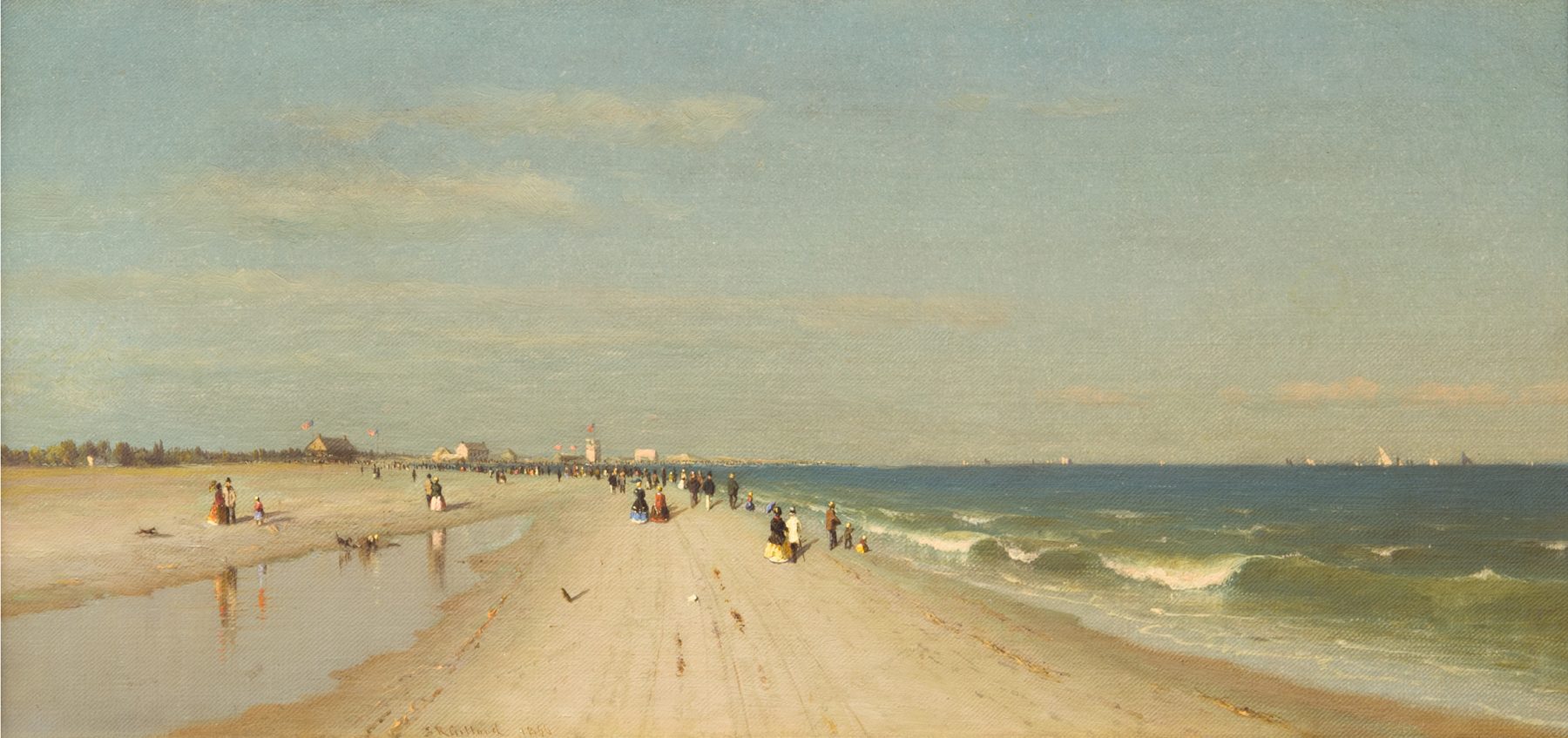Sanford Robinson Gifford
Sanford Robinson Gifford was a member of the Hudson River School of painters, a loose association of artists who captured the vanishing American landscape in the midst of rapid urbanization and industrialism. Gifford was the son of an iron foundry owner and was raised in the scenic riverfront town of Hudson, New York. He received early instruction in landscape painting and portraiture from Henry Ary, a former neighbor of Thomas Cole, the pioneering American landscape painter. In 1842, Gifford attended Brown University but academic life did not hold his interest and he left after two years. He then moved to New York City with ambitions to become an artist. Although he first trained as a portrait painter, Gifford was captivated by the landscapes of Cole and Asher B. Durand. Their spiritually-infused paintings depicted expansive, unspoiled views of nature and Gifford joined the small circle of artists who identified with this style. By the late 1840s, Gifford exhibited annually at the National Academy of Design and became a full Academician by 1854.
By the 1850s, Gifford began to develop a signature style, marked by panoramic landscapes that emanated light and atmosphere. Like many artists of his generation, Gifford sharpened his skills on a European tour. From 1855-1857, Gifford traveled to London, France, Belgium, Holland, Germany, and Italy. At London’s National Gallery, he particularly admired J.M.W. Turner’s luminescent style. Gifford’s first major painting after his travels, Lake Nemi, evokes a Turner-esque radiance, a mood he continually illustrated in his works.
The present work is the earliest depiction of Coney Island by a known artist and remained in a single private collection, descending in the family for nearly 150 years, from the time it was painted in 1866 until 2014. While the painting may have spent some time hanging in the family home in Waquoit Village, Massachusetts, it was placed on extended loan with the Museum of the City of New York from 1935 until 2014. The museum exhibited the painting twice in recent times as part of group exhibitions, in 2004 and 2011. An old label on the verso of the frame reads: “This picture belongs to Mrs. Homer I. Ostrom of Waquoit, Mass. It is to be returned to her in case a change takes place in this home.” The label is signed by Francis La Flesche [1857-1932], who was the first professional Native American ethnologist and was an anthropologist at the Smithsonian Institution.
Sanford Robinson Gifford
The Beach at Coney Island, 1866
Oil on canvas
10 x 20 in
Signed and dated lower left
Provenance
Sanford R. Gifford, 1866
Claudius Buchannan Conant, acquired directly from the artist in 1866
Sara Payson Conant Ostrom, daughter of the above, by descent in 1878
Sara Ostrom, granddaughter of the above, by descent in 1935
Manoogian Collection (acquired from the above in 2014)

